Let me repeat again: Tom Kington (7 Sept 2019): wrote in The Times on the Amazon Synod: “A synod planned by Pope Francis … has provoked the fiercest clash yet between the pontiff and his conservative critics.” (emphasis added).
As Franciscans let us remember that the theme of the Amazon Synod was: “Amazon: New Paths for the Church and Integral Ecology” and one of its movers was Cardinal Cláudio Hummes, OFM, Archbishop Emeritus of São Paulo, Brazil and President of the Pan-Amazon Ecclesial Network (REPAM).
After reading an editorial in The Tablet, a prestigious British Catholic weekly supportive of synodality; and articles by two Americans: Dan Horan, OFM, supporter: “Synodality isn't just an option, it's the only way to be church” and George Weigel, critic: “The “synodality” masquerade” I sought more information. This leads me to say this: some of the critics are definitely not in the Franciscan camp! As Franciscans we have to remember who we are and where Franciscan Tradition leads us. We should recognise and beware of the implied anti-Franciscan criticism such as that from Dr. Farrow, a Canadian.
In fact synods predate the Constantinian shift to a monarchical church in the fourth century. The International Theological Commission’s March 2018 study “Synodality in the Life and Mission of the Church” acknowledged: “Although synodality is not explicitly found as a term or as a concept in the teaching of Vatican II, it is fair to say that synodality is at the heart of the work of renewal the Council was encouraging” (n 6).
The concept of a synodal church was outlined by Pope Francis on the 50th anniversary of the founding of the Synod of Bishops, 17 Oct 2015.
"synodality" means "walking together"
with every member of the church,..."
From The Catholic Register, a definition of synodality: “In simple terms, "synodality" means "walking together" with every member of the church, recognizing that the grace of baptism makes one part of the body of the church and, therefore, responsible for its life and mission.”
But this needs elaboration. So let me draw on The Tablet (2 Nov 2018): (emphasis added)
“the emerging theory of synodality – a favourite theme of Pope Francis – is about participation by the whole People of God and the sharing of responsibility at all levels. [My comment: does this sound a bit like the People of God’s “co-responsibility” that Benedict XVI mentioned. Also see CCCB
The days of confining church government only to bishops have to be over. Confidence in bishops acting alone has been severely undermined by their role in the scandal of child abuse by clergy, particularly by covering it up rather than straining every episcopal muscle to stamp it out. … [The Pope] can be expected to appeal to the world’s young Catholics to rediscover the excitement of the Gospel and fulfil their vocation to spread the Word, whatever their ecclesiastical status.
The Church is being reminded by Pope Francis of the insight of the Second Vatican Council, that the fundamental Christian sacrament is not ordination as priest or bishop, but baptism. All the baptised are responsible for the welfare of the household of the faith. So the Church’s missionary and pastoral priorities can no longer be imposed from above, but discerned by consultation with the faithful down to parish level. Nor can there be discrimination in those processes on the basis of gender, race, age, sexual orientation or any other grounds, for there is no discrimination in baptism itself.
Synodality, the word that describes all this, now has to be taken into the Church’s structures at national, diocesan and parish level. That is an immense challenge.”
Others have written that synodality incorporates: subsidiarity; decentralization; solidarity; and unity in diversity. Cardinal Marx has said. "The universal church can only exist in cooperation with the local churches – sub Petro et cum Petro –[under Peter and with Peter] as Pope Francis strongly worded it."
Why is synodality controversial?
Perhaps because as Dan Horan, OFM wrote, some are calling for “a broader embrace of … "the type of synodal pathway that the church in the Amazon has been undergoing.” ”
Yes, indeed, but the controversy is not just restricted to the synodal way of governance (less clericalism; greater pastoral concern; consultation, listening, debate, discerning and final decision making by pastors & bishops (with the final say by the Bishop of Rome) but it is the results i.e. implementation of Laudato Si’s integral ecology; the possibility of a greater role for women & a married clergy & a new Amazonian liturgical rite that really excites the ire of the critics. They do not want all this i.e. what some call the “progressive agenda” to be an example and copied by the rest of the Catholic world.
But let us hear from Dan Horan, OFM: “A broader sense of synodality beyond that consultative body of bishops in Rome is about proper recognition of the place of all the baptized faithful in the prudential discernment about church decision-making and governance. It is not a call to do away with hierarchical leadership. No, the church is not a democracy. But neither is the church a monarchy wherein local bishops, bishops' conferences, or even the pope rules by fiat. The church is a "hierarchical communion," as Lumen Gentium explains, but one whose ministers arise from and are oriented to the service of all the baptized.” As the International Theological Commission in Synodality In The Life And Mission Of The Church, 2018 puts it:
“Communion, synodality, collegiality - 6. … In this ecclesiological context, synodality is the specific modus vivendi et operandi [way of life and operation] of the Church, the People of God, which reveals and gives substance to her being as communion when all her members journey together, gather in assembly and take an active part in her evangelising mission.”
None of this sounds heretical or off the wall to me; in fact it sounds very good and I would echo what Dan Horan, OFM says: “I would suggest that synodality is not merely an option to be recovered, but is in fact the only authentic way to be church.” [emphasis added]
“I would suggest that synodality is not merely an option to be recovered, but is in fact the only authentic way to be church.”
George Weigel’s criticism.
I will offer only one short quote (always a dangerous thing!):
“Serious consultation and collaboration are essential to effective pastoral leadership, including the leadership of the Bishop of Rome. But over the 50-plus years of its existence, no one has figured out how to make the Synod of Bishops really work. Propaganda about “synodality” that functions as rhetorical cover for the imposition of the progressive Catholic agenda on the whole Church is not an improvement on that track record; it’s a masquerade, behind which is an agenda.”
As much as I respect George Wegel all I will say is I do not agree with his criticisms. Perhaps because from what I have heard I strongly approve the “progressive agenda” and its broadcasting of inconvenient truths. Those that do not approve generally also dislike Pierre Teilhard de Chardin, SJ; Vatican II; Ilia Delio, OSF; Richard Rohr, OFM; Laudato Si’, and much of what Pope Francis espouses. Some do not like me, especially the one who verbally attacked me after mass one Sunday as I stood before my display about the Season of Creation for being a “radical,” which of course I am; radical being derived from the Latin radix meaning root i.e. treat root causes not just symptoms of problems.
Let us pray for Pope Francis:
Lord, give to Your shepherd, Francis, a spirit of courage, right judgement, knowledge & love.
May he build Your church into a sacrament of unity, love, and peace for all the world.
May he continue to lead us on new and challenging paths to walk together always guided by Your Holy Spirit to cherish, nurture, protect and sustain our Sister Mother Earth and work for the common good.
May the example of St Francis always inspire our Popes in new ways. Amen.
Peace & joy, Andrew, ofs
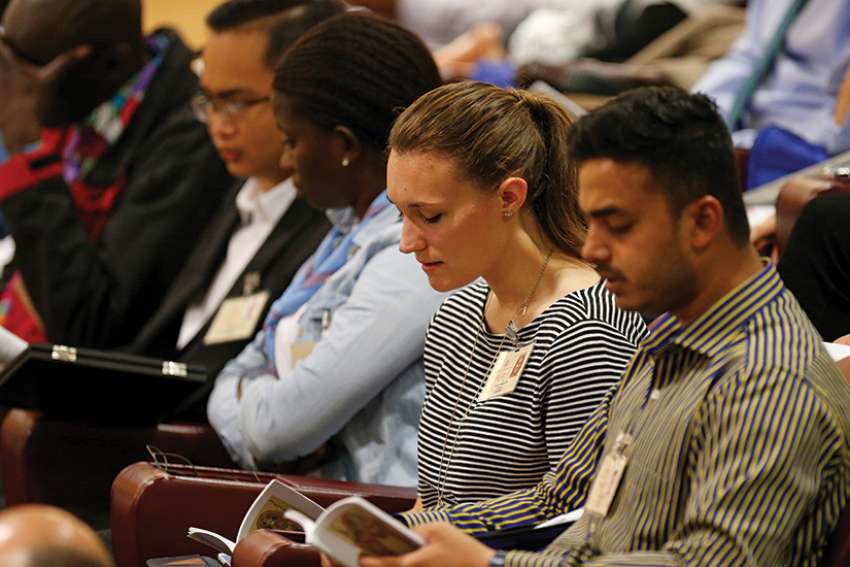
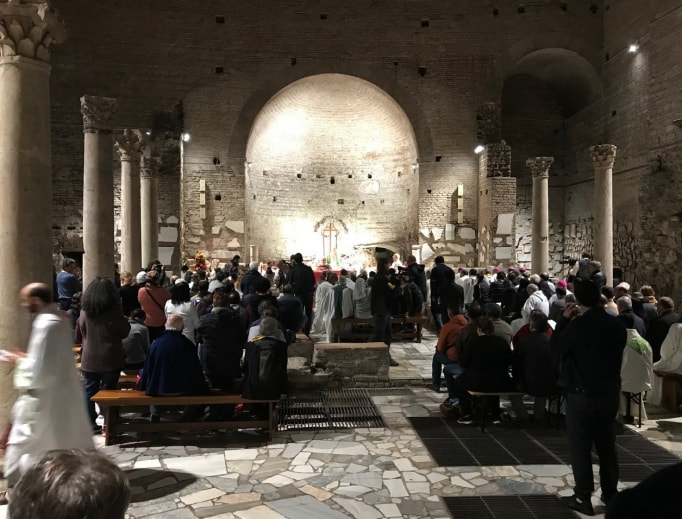
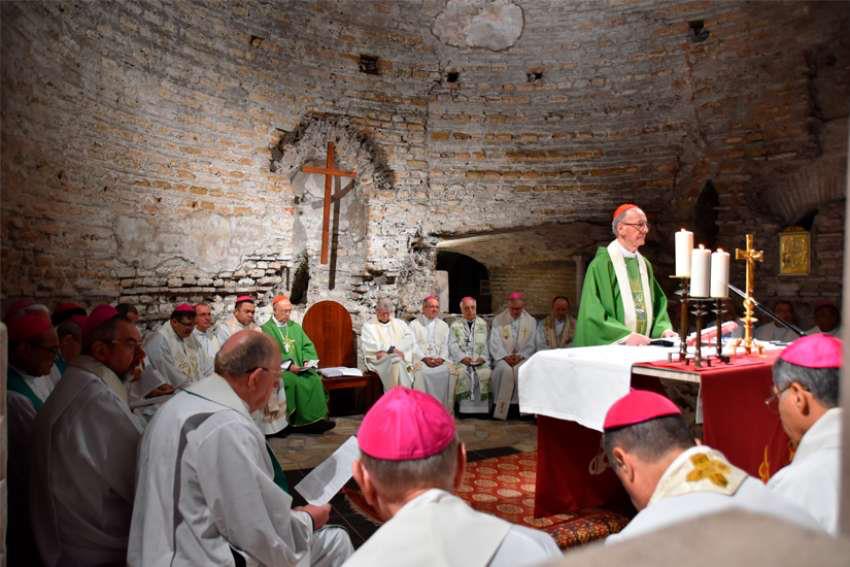

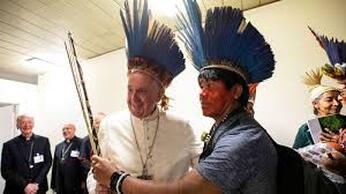
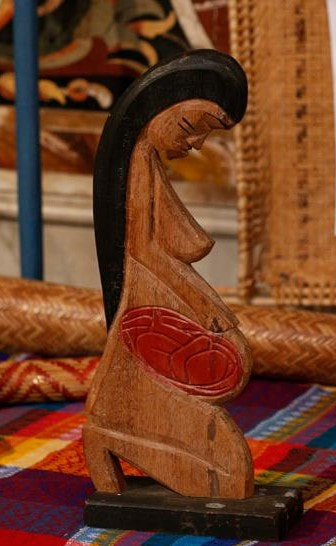
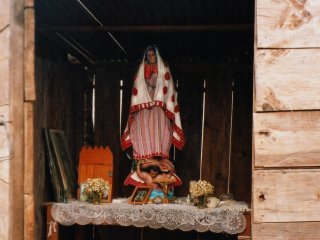
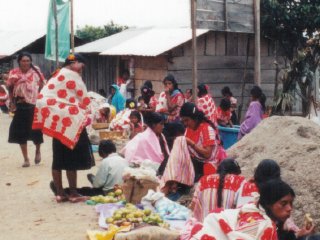
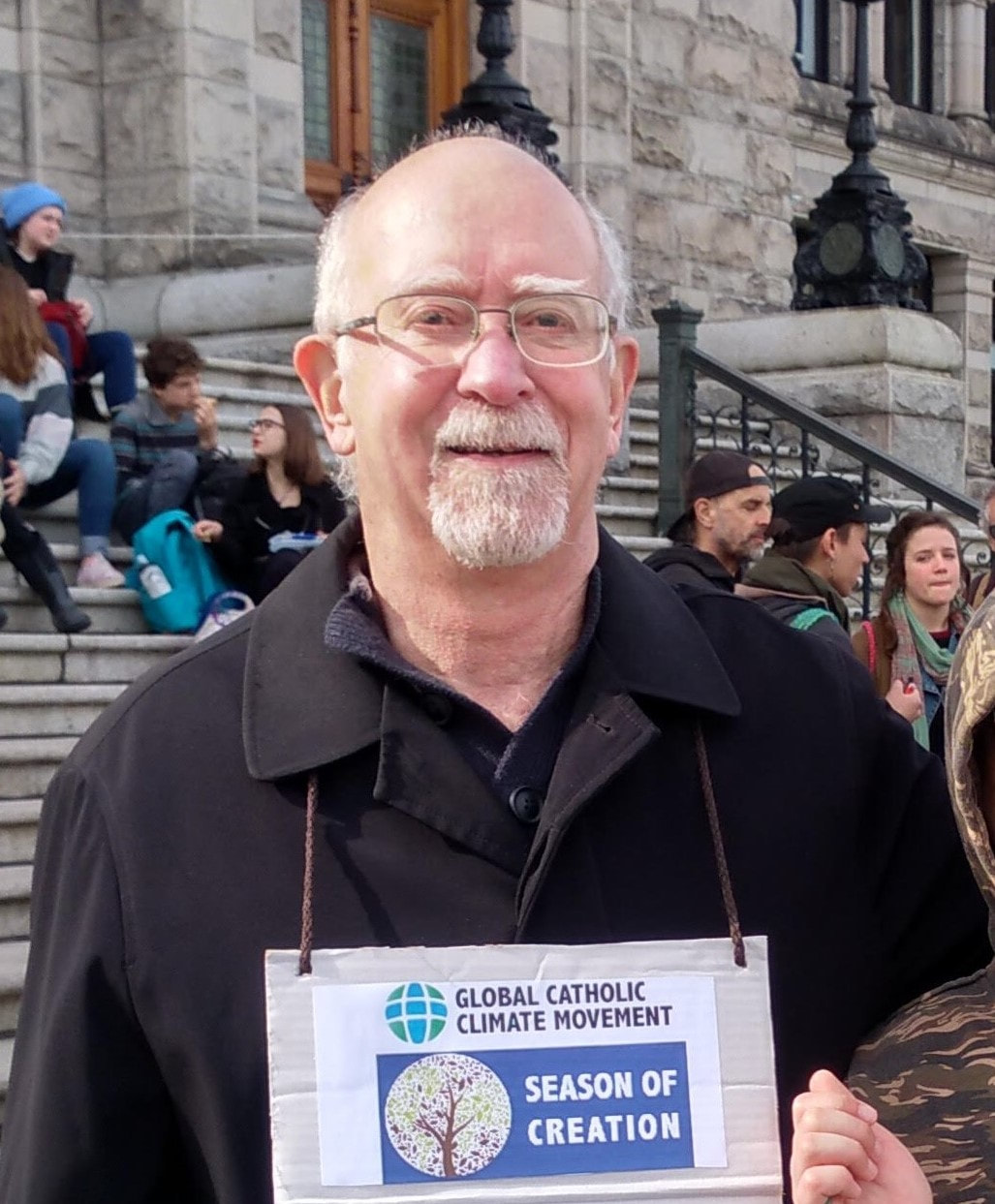

 RSS Feed
RSS Feed